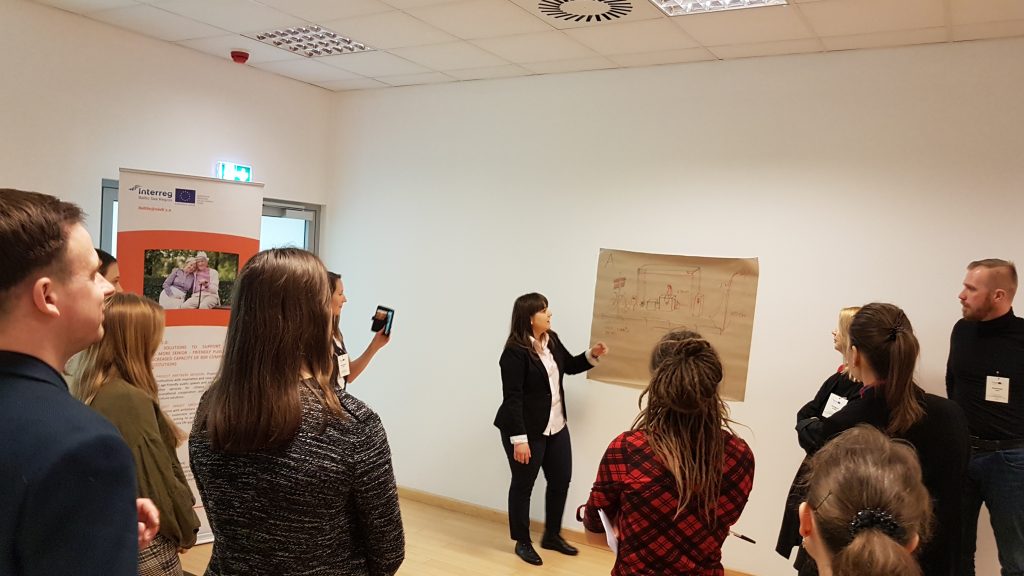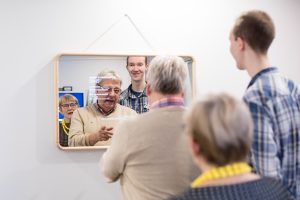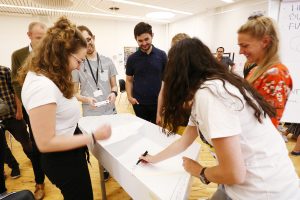In order to face the challenge of providing accessible public spaces the project leader of BaltSe@nioR 2.0 invited for cooperation 2 Poznan universities and a wide range of international experts and in the first days of March organized a multidisciplinary conference – „Innovations in occupational therapy. Accessibility as a space for interdisciplinary and interprofessional cooperation”. This special event, brought together experts and scientists from 15 countries to share their knowledge and experience in creating accessible and safe public spaces for seniors.
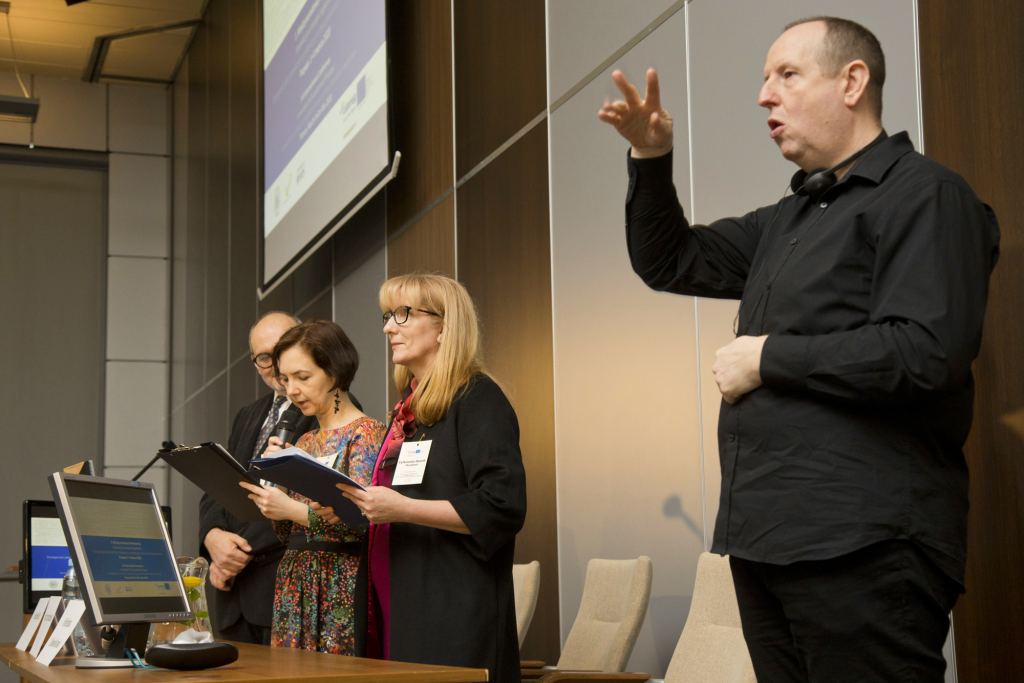
Inclusive space
The fast pace of population aging is observed in almost all highly developed countries. In 2050, people aged 65 and over will constitute 28.5% of EU citizens. This is a huge challenge not only in the economic but also in the social perspective, as this group, despite the emerging limitations in mobility, wants to remain active for as long as possible. Seniors need a public space that is tailored to their capabilities, and at the same time is also appropriately secured especially in the current pandemic situation. Unfortunately, examples such as the lack of ramps to buildings, squares or parks, and benches without armrests that can be used for support, show that as a society we still do not understand and do not implement the vision of accessibility. However, we deeply believe that the public space should be accessible to everyone, and therefore created in accordance with the principles of inclusive design. To achieve this, three Poznan universities joined forces to organize a conference with the main goal to raise the standard of functioning of seniors in the public space, thanks to design, urban and architectural solutions as well as the activation of seniors through occupational therapies. Consequently the core aim of the event was to popularize knowledge about accessibility, due to the exchange of experiences and achievements of geriatricians, occupational therapists, designers, engineers, architects, representatives of municipalities, non-governmental organizations, scientists and practitioners.
„Within the conference, 6 interdisciplinary thematic sessions took place, over a dozen workshops, as well as a unique meeting of local government representatives, during which possible directions of cooperation around the topic of accessibility were discussed. We strongly believe that the conclusions drawn from our conference will encourage public institutions, designers and entrepreneurs to invest in responsible projects that take into account the needs of seniors and support the spatial policy for seniors,” said Dr Beata Fabisiak, coordinator of the BaltSe@nioR 2.0 project.
The conference was also a fantastic source of numerous inspirations emerging from the Baltic countries, consistently striving to create a society of equal chances. Estonia is a notable example here, as due to the aging of the nation Estonia has placed accessibility issues on the political agenda. Keit Parts, the Head of the Accessibility Task Force of the Estonian Government Office, was one of the keynote speakers at the conference. The Estonian government has convened a task force on accessibility that aims to address the complex issue of accessibility across all policy fields. Keit Parts gave a speech on the challenges her team faces to achieve this ambitious goal of developing policy measures that would make society accessible by 2035 and thus ensuring that accessibility in both the physical and e-environment becomes by default a part of all policy fields.
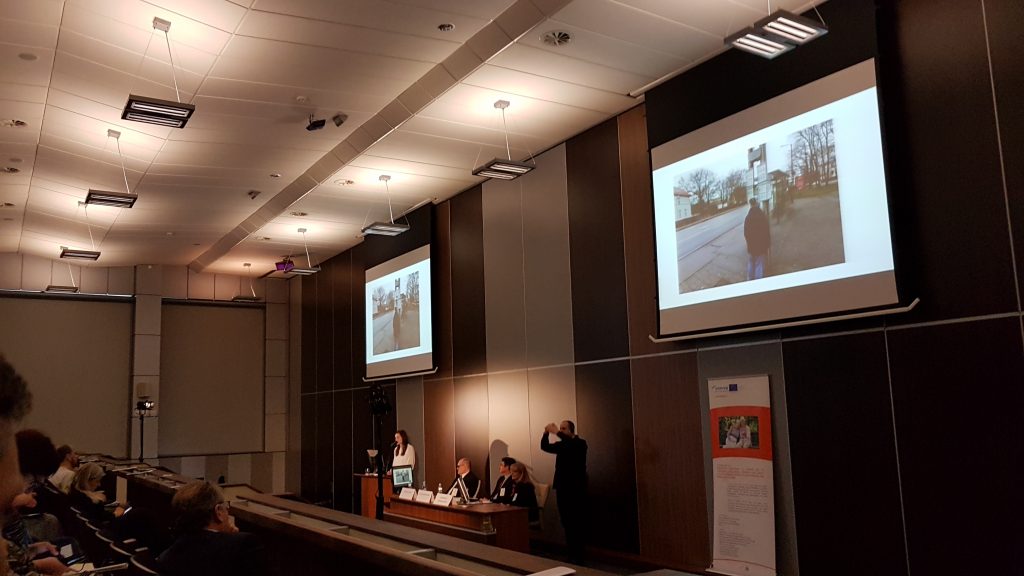
Accessibility supported by technology
Everything in our life is becoming more intuitive in use and more robotized. Why not implement the technological advances to help seniors lead a more independent and satisfying life? Modern products for seniors should therefore combine innovative technological solutions and comfort, and thus be easily accessible to users of all ages, including people with reduced mobility. The keynote speaker of the conference Prof. Thomas Bock, a visionary and expert in the field of construction robotics, pointed out that architectural design solutions that were already being used in Japan in the 15th century in homes with sliding or rotating walls, floors or ceilings could be a great inspiration for such design. Another idea is connected with mechatronic furniture, which, thanks to its functionality, can help seniors and facilitate everyday functioning. „The use of mechatronic components opens new perspectives in the design and construction of furniture, significantly affecting the comfort of use by enhancing the acoustic properties and improving the smoothness and safety of using the mobile parts of the furniture” said Prof. Thomas Bock, from the Technical University of Munich. During the second workshop day of the conference Paweł Borkowski, representing Hettich Polska, presented many inspiring solutions supporting the functioning of seniors and confirming this trend. Participants could broaden their knowledge about furniture systems enabling, e.g. adjustment of the height of hanging cabinets, or worktops to the requirements of a person moving on a wheelchair or solutions providing easier access to the interior of various types of cabinets.
Sensory design, resulting in creation of facilities performing rehabilitation and development functions, is becoming more and more popular nowadays. Special moto-sensory paths are built in the open space for training purposes, and designers of the spaces indicated for seniors are more and more boldly reaching for solutions inspired by virtual reality (VR). Those, while affecting various senses, can play an orientation or therapeutic role. At one of the workshops, a group of experts from 8 countries dealing with welfare technology, robotics, VR, geriatrics, design as well as representatives of municipalities, companies, students and young designers worked on pilot scenarios for a VR game aiming to teach empathy towards seniors. This game will be launched next year. It is worth remembering that the mechatronic or robotic environment can support functioning of the elderly and allow them an independent life, work and increased mobility.
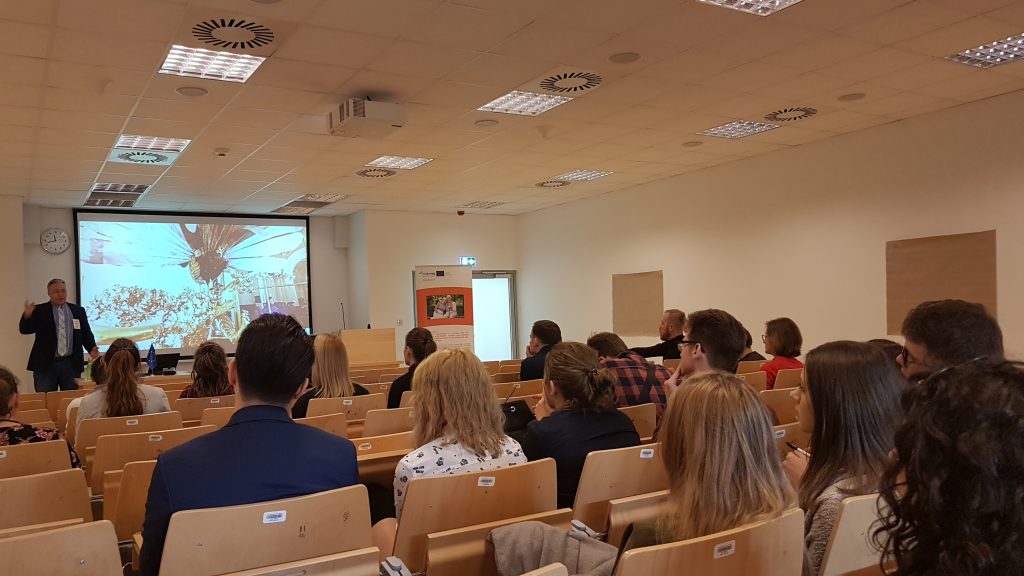
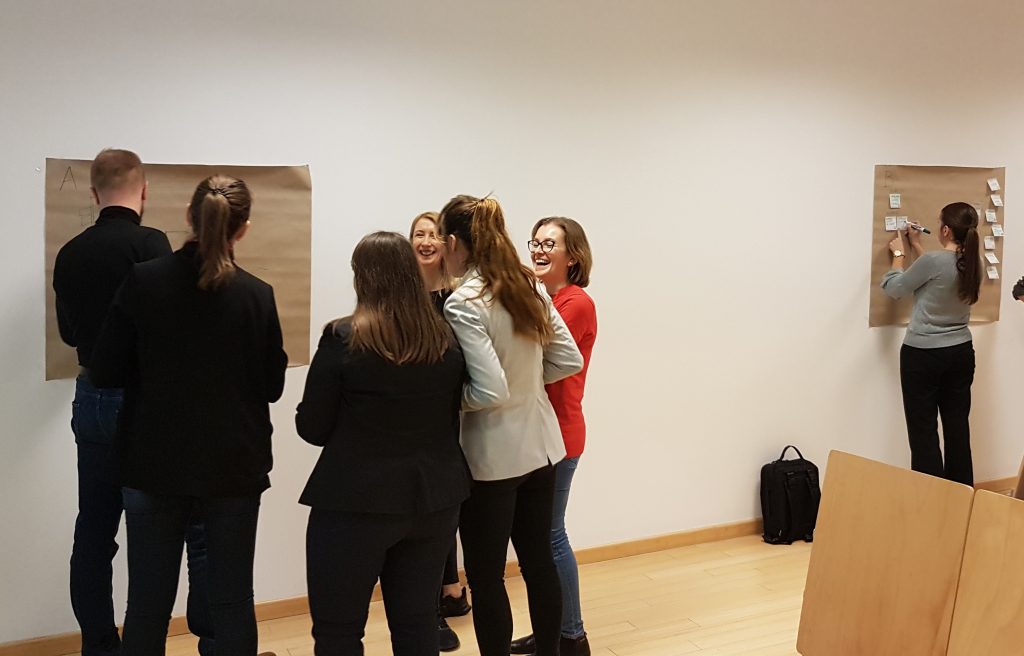
Openness = Safety
The year 2020 is the year of redefining the rules for designing public space as well as the principles of using it. The representatives of municipalities present at the conference drew attention to one of the most pressing problems of the modern world – the problem of ensuring the safety of citizens using the public space. Months of the global fight against the COVID-19 pandemic have confirmed the importance of this issue, showing that openness must also mean safety. At home, in public institutions, in the care sector or in hospitals, pathogens are a common problem. Older people are particularly vulnerable to them due to their naturally lower immunity. Therefore, in the interior design for seniors, it is worth using materials that have natural antiseptic properties and have a bactericidal effect. Marek Borowiak, leading the workshop dedicated to this topic, shared with the participants of the conference his knowledge on the materials that provide protection in public spaces such as health care facilities, libraries, or, for example, cultural centers.
He emphasized, among other things, the advantages of using in the design process the Forbo linoleum (e.g. for furniture), which due to the content of linseed oil is a natural antiseptic. Other materials that are worth implementing in places used by seniors are high-pressure laminates with the microPlus antibacterial additive, which combats 99% of bacteria, or „Solid Surface” with acrylic resins, inhibiting bacterial growth within 24 hours. Stoneware with the antibacterial Microban system, based on the action of silver ions, will protect floors and walls, making cleaning easier. Marek Borowiak from the Laminart company advised the young designers and representatives of public institutions that „It is good to begin the fight against bacteria already at the design stage, by using materials that provide natural protection. It’s a better solution because, unlike chemicals, it’s safer and works longer„.
Ensuring access to the public space constitutes a huge challenge that we cannot cope with without interdisciplinary cooperation at many levels. Therefore, within the BaltSe@nioR 2.0 project, three Poznan universities – Poznan University of Life Sciences, Poznan University of Medical Sciences and SWPS University of Social Sciences and Humanities – together with the support of an international group of experts representing over 50 institutions and organizations, showed that such a dialogue is important, possible and can help to create a more friendly living environment for seniors. Maciej Siuda, an architect and designer participating in the conference, emphasized that „architecture, space and design are a natural field for verifying how far, as a society, we have reached in the implementation of the idea of accessibility„. The vision of an open and safe public space is a very complex issue. Thus it is worth making this vision true with the involvement of various actors and stakeholders, while taking into account such core values as equality, security, community and the freedom of choice. Thanks to this, the public space can become accessible to everyone and consequently people with disabilities and seniors can have a chance to really feel like equal members of the European community.
The presentations from the conference (with the translation into sign language) will be available in the Virtual Library at www.baltsenior.com. The conference was organized within the BaltSe@nioR 2.0 project, co-financed by the European Union (European Regional Development Fund) as part of the INTERREG Baltic Sea Region program.
